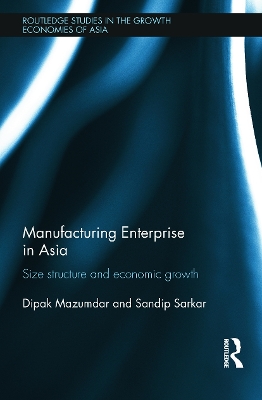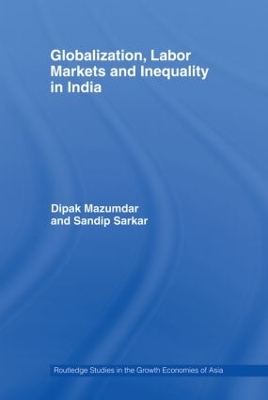Routledge Studies in the Growth Economies of Asia
2 total works
Issues relating to the size of firms in manufacturing are central to the discussion of development strategies. This book offers an interpretation of growth trajectories in selected Asian economies in terms of the size-structure of enterprises in the manufacturing sector of these economies.
The book presents a comparative survey of distribution of enterprises by size across Asia, including India, Japan, Taiwan, Korea, Thailand, Bangladesh and Vietnam. A broad survey of official data on the size structure of manufacturing helps to identify three distinct patterns of manufacturing sector development and makes the connection between enterprise development and the overall impact on the economy. The book goes on to investigate the problem of the peculiar dual size structure of manufacturing in India, with its two modes at the low and high end of the size distribution and conspicuous ‘missing middle’, and the effect that this has on the economy. This pattern is contrasted with the ‘East Asian, model with a more even size distribution, and the more recent experience of the newly developing countries of Asia with size distribution skewed to the right. It is an important contribution to studies on Asian Economics and Manufacturing Industries.
Globalization, Labour Markets and Inequality in India
by Dipak Mazumdar and Sandip Sarkar
India started on a program of reforms, both in its external and internal aspects, sometime in the mid-eighties and going on into the nineties. While the increased exposure to world markets ('globalization') and relaxation of domestic controls has undoubtedly given a spurt to the GDP growth rate, its impact on poverty, inequality and employment have been controversial. This book examines in detail these aspects of post-reform India and discerns the changes and trends which these new developments have created. Providing an original analysis of unit-level data available from the quinquennial National Sample Surveys, the Annual Surveys of Industries and other basic data sources, the authors analyse and compare the results with other pieces of work in the literature. As well as describing the overall situation for India, the book highlights regional differences, and looks at the major industrial sectors such as agriculture, manufacturing and tertiary services. The important topic of labor market institutions - both for the formal or organized and the unorganized sectors - is considered and the possible adverse effect on employment growth of the regulatory labor framework is examined carefully. Since any reform of this framework must go hand in hand with better state intervention in the informal sector to have any chance of acceptance politically, some of the major initiatives in this area are critically explored. Overall, this book will be of great interest to development economists, labour economists and specialists in South Asian Studies.

